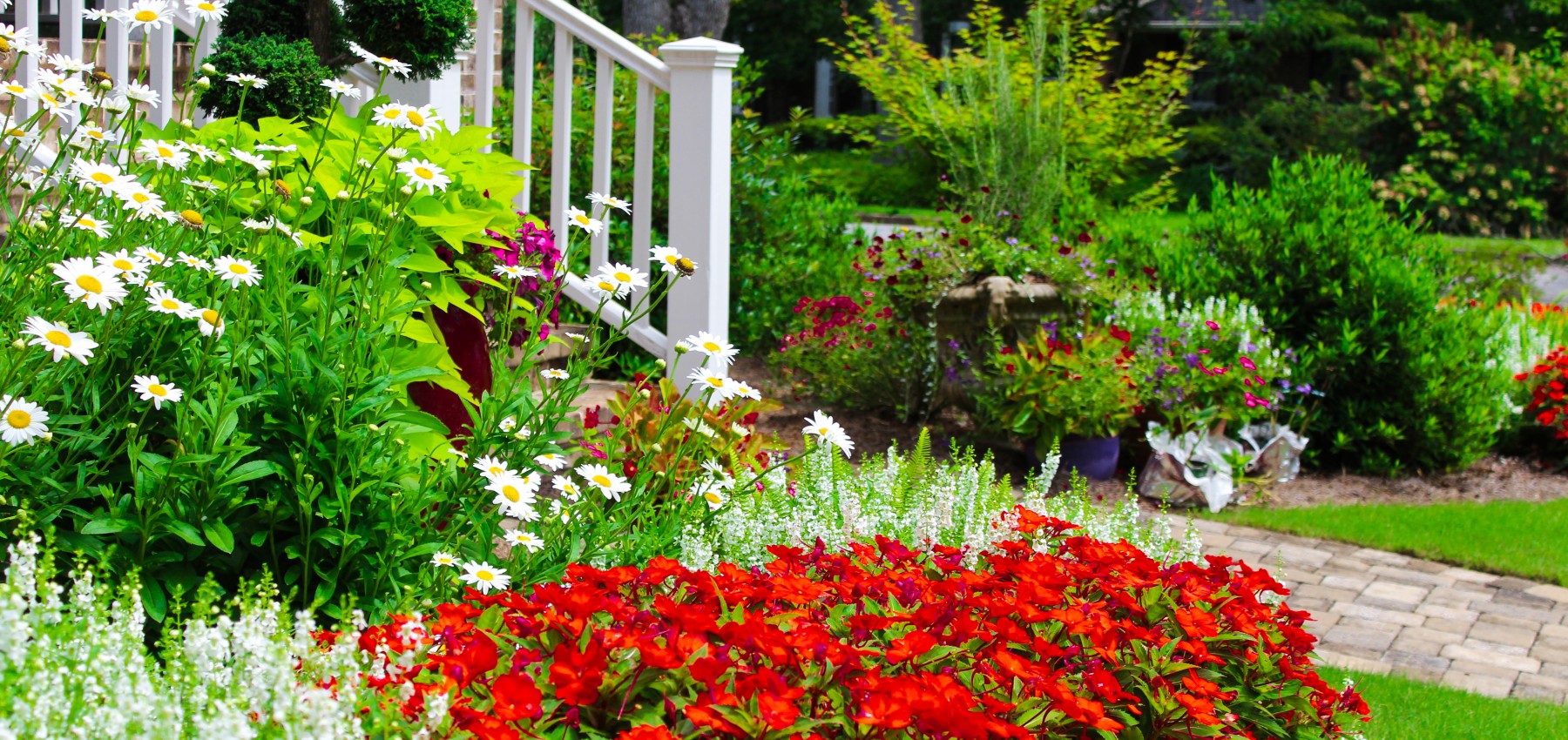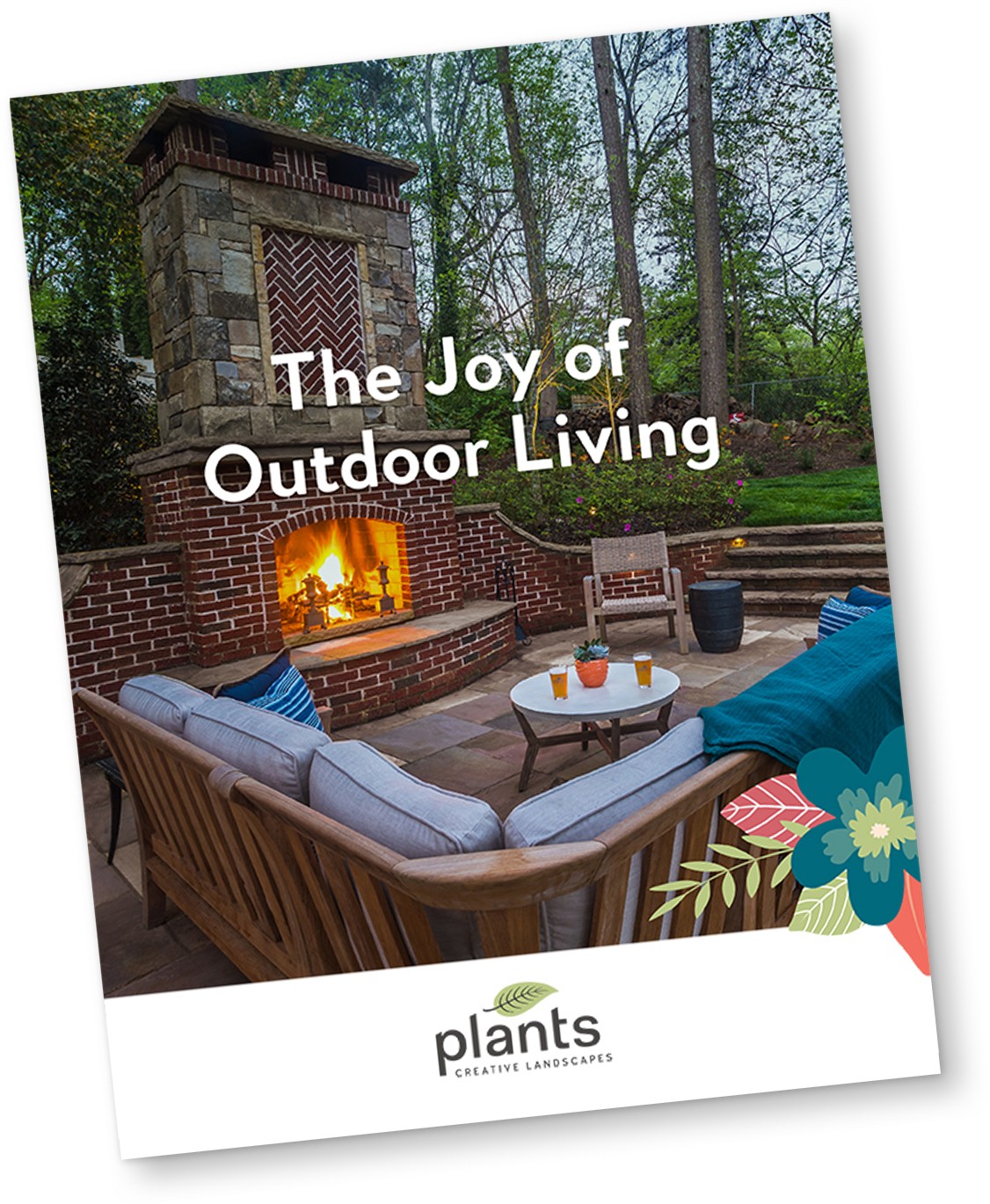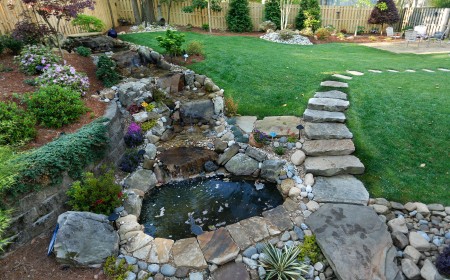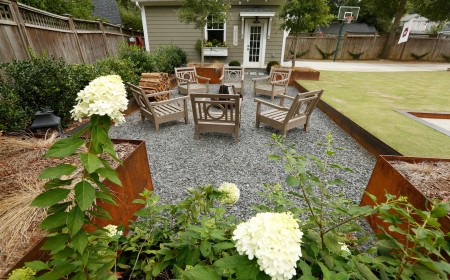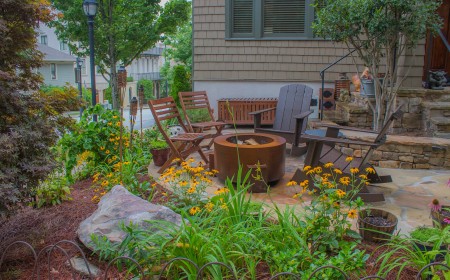Landscape design trends haven’t always been great for the environment. Typically, a lot of folks like a low maintenance landscape. This usually involved lots of evergreens and turf. And, while I won’t deny that these are absolutely low maintenance landscapes, that they can look nice, and that they’re definitely “green” — they don’t always help the surrounding environment.
But this trend is changing. These days, many of our customers want to attract the “three B’s” — bees, birds and butterflies — to their gardens and landscapes. The issue is that they aren’t really sure how. But designing a truly eco-friendly landscape doesn’t have to be difficult!
Pollinator gardens
Pollinators are really important parts of every ecosystem in Georgia. In simplest terms, pollination is the process in which pollen grain moves from the anther (male part) of a flower to the stigma (female part) of a flower. In so doing, the flower then produces seeds, fruits and the next generation of plants! While this can happen through self-pollination and water and wind pollination, it also happens via pollinators — animals that transport pollen grains between plants. In fact, the Pollinator Partnership estimates that one out of every three bites of food we eat is there because of pollinators!
The “three B’s” I mentioned earlier are all pollinators. Recently, there’s been a decline in their population the United States — as I like to call it, “the plight of the bees”. This is because many pollinators don’t have areas to feed or nest. And it has a lot of us concerned about food production.
A big trend in landscape design right now is pollinator gardens. These are gardens full to bursting with native, flowering plants that are a great habitat for pollinators. While they tend to be a little more high maintenance, they are wonderful for the environment. They are also very bright and vibrant, providing year-round beauty.
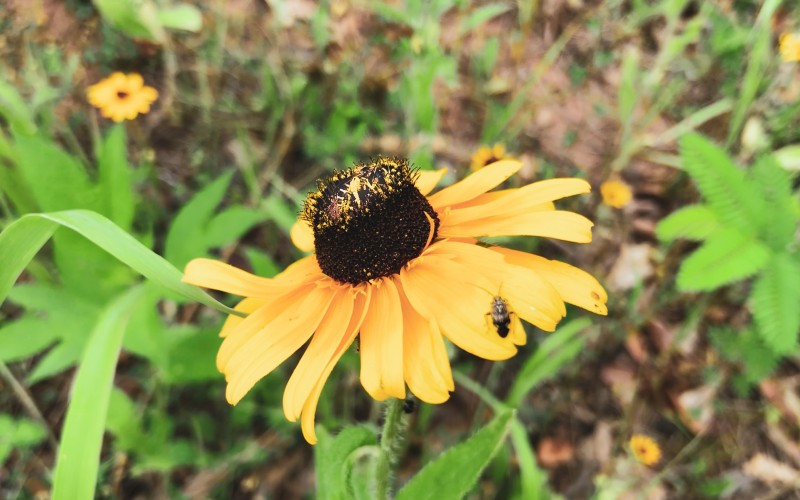
Native plants
Speaking of native plants, these go hand-in-hand with both eco-friendly landscapes and pollinator gardens. Many of our customers want a landscape that they can use. One way to make a landscape useful for both yourself and the environment is through edible plants.
There are a lot of plants out there that are both decorative and edible. Some of the most common are herbs and spice such as...
- Rosemary
- Creeping thyme
- Lemongrass — which is great for tea!
- Russian sage
Fruit trees are also rising in popularity, especially peach trees — the official state fruit of Georgia! Another fruit I’m starting to use more and more in landscapes are blueberry bushes. These are great for folks who still want some formality in their landscape, as they can be used in lieu of boxwood hedges. They’re actually evergreen shrubs that will keep their color throughout the year!
Beyond edibility, there are plenty of non-edible, native plants that attract pollinators too. These are almost always perennials that bloom every year, but they can also be annuals — plants that complete their life cycle in one year — or biennials, which complete it over two years.
Regardless of how the plant blooms, you need to make sure that your garden has continuously flowering plants because this is what pollinators feed on… the flowers! You won’t be able to attract pollinators otherwise. This means the best-suited plants tend to be ones that continuously flower throughout pollination season. Some of the ones I like to use are...
- Purple coneflower
- Black-eyed Susans
- Shasta daisies
- Daylilies
- Ornamental crabapples
If you’re interested in adding these types of elements to your landscape, get in touch. We love to design and build landscapes that benefit both our customers and the environment!
But wait! There’s more to a sustainable landscape than just the plants you use — where water comes and goes in a landscape also plays a large role. Check out part two of our “eco-friendly landscapes” post — on water features and rain gardens!
